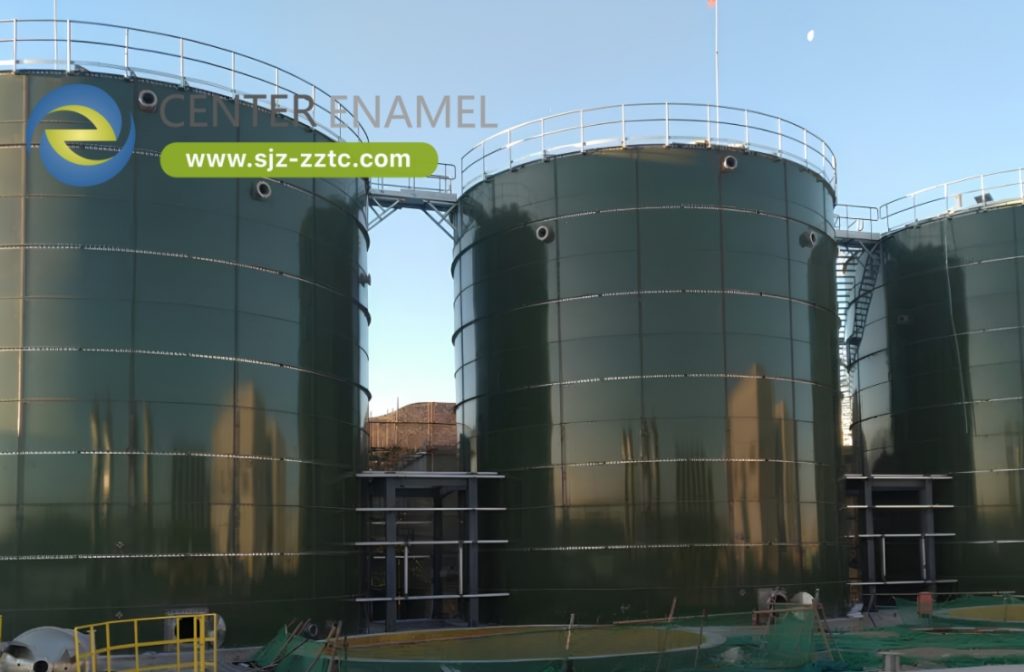Efficient Urban Organic Waste Recycling Using CSTR Technology | Center Enamel

Urban centers face increasing challenges in managing organic waste while striving to improve sustainability and reduce environmental impacts. As municipalities seek innovative solutions to recycle organic waste effectively, Continuous Stirred Tank Reactor (CSTR) technology has emerged as a promising approach. Center Enamel is at the forefront of this innovation, offering advanced CSTR systems designed to transform urban organic waste into valuable resources such as biogas and nutrient-rich digestate.
Continuous Stirred Tank Reactors are engineered to optimize the anaerobic digestion process. In a CSTR, organic waste is continuously fed into a reactor where microbial activity breaks down the waste in an oxygen-free environment. The constant mixing ensures uniform distribution of feedstock and maintains optimal conditions for microbial metabolism, resulting in consistent and efficient biogas production. For urban waste management, this means that municipal organic waste—ranging from food scraps to yard trimmings—can be processed in a controlled environment to generate renewable energy and reduce landfill usage.
Key Advantages of CSTR Systems in Urban Recycling
Enhanced Process Efficiency:
The design of CSTR systems ensures thorough mixing of organic waste with microbial inoculants, which maximizes the rate of digestion. This uniformity not only accelerates the decomposition process but also enhances the conversion of organic material into biogas. Urban facilities benefit from a reliable and continuous production of biogas, which can be used to offset energy costs or even feed into the local grid.
Adaptability to Variable Feedstock:
Urban organic waste is inherently heterogeneous, comprising various types of biodegradable material. CSTR technology is particularly well-suited for processing such variable feedstocks. The reactor’s mixing mechanism and controlled environment allow it to adapt to fluctuations in waste composition while maintaining high conversion efficiency. This flexibility makes CSTR systems ideal for municipalities that must handle diverse waste streams.
Operational Stability and Scalability:
One of the distinguishing features of a CSTR is its operational stability. The continuous stirring and feed of waste create a dynamic yet stable environment for anaerobic digestion, minimizing the risk of process failure. Additionally, CSTR systems are scalable, making them a viable solution for both small urban communities and large metropolitan areas. As waste volumes increase with urban expansion, these reactors can be scaled up or linked in series to meet growing demands.
Reduction of Greenhouse Gas Emissions:
Efficient processing of organic waste through CSTR technology plays a crucial role in reducing greenhouse gas emissions. By diverting organic waste from landfills—where it would otherwise decompose anaerobically to produce uncontrolled methane emissions—CSTR systems capture methane in a controlled manner. This biogas can be harnessed as an energy source, thereby converting a potent greenhouse gas into a renewable resource.
Production of High-Quality Digestate:
Beyond biogas, anaerobic digestion via CSTR systems produces digestate, a nutrient-rich byproduct that can be used as an organic fertilizer. The digestate returned to urban agriculture or landscaping helps close the nutrient loop, promoting soil health and reducing the need for chemical fertilizers.
Technical Overview of the CSTR Process
The CSTR process begins with the pretreatment of urban organic waste to remove non-biodegradable contaminants and to homogenize the feedstock. Once introduced into the reactor, the waste is mixed continuously to ensure that all particles are exposed to the active microbial community. This constant agitation prevents stratification, ensuring that temperature, pH, and nutrient levels remain uniform throughout the reactor.
Key parameters such as retention time, temperature, and loading rate are carefully monitored and controlled. For urban applications, mesophilic conditions (typically between 30°C and 40°C) are commonly maintained due to their balance between energy input and process efficiency. Advanced sensor technologies and automated control systems allow operators to adjust these parameters in real time, thereby optimizing the digestion process and maximizing biogas yield.
Environmental and Economic Impact
Implementing CSTR technology in urban waste recycling offers significant environmental benefits. The conversion of organic waste into biogas reduces landfill volumes and mitigates the associated environmental hazards. By capturing and utilizing methane, cities can lower their overall greenhouse gas emissions, contributing to cleaner air and a reduction in the urban heat island effect.
Economically, the renewable energy produced through anaerobic digestion can be a valuable asset for municipalities. The generated biogas can power local facilities or be sold as a renewable energy source, creating an additional revenue stream. Moreover, the use of digestate as an organic fertilizer supports sustainable urban agriculture and reduces dependency on imported chemical fertilizers.
Why Center Enamel?
Center Enamel has decades of experience in developing advanced storage and recycling solutions, with a focus on sustainable technologies. Our CSTR systems are engineered with precision and built to meet rigorous international standards. We offer:
- Custom-Engineered Solutions: Our reactors are designed to accommodate the unique waste streams and processing requirements of urban environments.
- State-of-the-Art Manufacturing: Utilizing modern production techniques and quality control measures, our systems deliver consistent performance and long-term reliability.
- Comprehensive Support: From initial consultation to installation and ongoing maintenance, Center Enamel provides end-to-end service to ensure optimal system performance.
- Sustainability Commitment: Our focus on renewable energy and environmental protection underscores our commitment to supporting greener urban infrastructures.
Center Enamel’s advanced CSTR systems provide a reliable, scalable, and efficient means to transform urban waste management practices while contributing to environmental stewardship and economic viability. For cities and municipalities looking to enhance their waste recycling capabilities, Center Enamel stands as a trusted partner. Contact us today to learn more about how our CSTR technology can be implemented to create a more sustainable urban environment.
